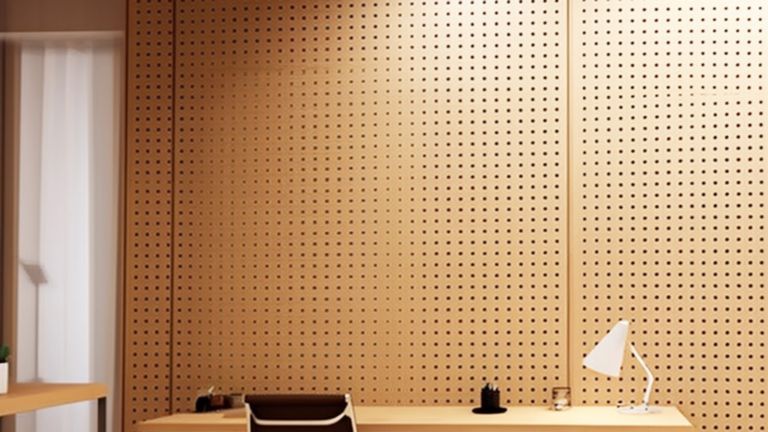I. Introduction
Wooden perforated sheets have become an increasingly popular feature of acoustic design, particularly auditoriums. Not only can these panels add aesthetic charm, they can also play a vital role in optimizing sound quality and distribution – both essential elements in optimizing the auditorium experience. In this case study, we explore their successful applications within auditoriums while emphasizing their benefits and versatility within this acoustic application.
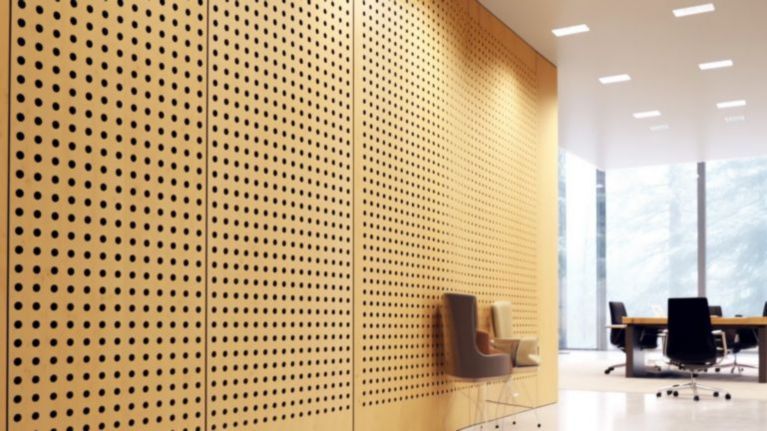
II. Understanding Wooden Perforated Sheets
Wooden perforated sheets are precision engineered panels crafted from various species of wood by perforated sheets suppliers. Carefully spaced holes allow sound waves to pass through while maintaining structural integrity of these panels(perforated sheet size 600x1200mm), enabling sound transmission while still preserving structural integrity. Their manufacturing involves cutting, shaping and perforating wooden substrates into an eye-catching product with superior acoustic performance.
Common Wood Types Used for Perforated Sheets
Different species of wood can be used to manufacture perforated sheets, each providing its own distinctive advantages. Common options for perforated sheeting production are:
Oak perforated sheets offer durability and natural beauty that add a sense of elegance to auditorium interiors, while maple’s light hue and smooth texture offer modernity and contemporaryness.
Birch Wood: Birch is an attractive combination of durability and affordability, making it an excellent material choice for perforated sheets in auditoriums.
Perforated Sheet Size, Thickness and Hole Size Variations
The sheets come in various perforated sheet sizes to allow for design and installation flexibility. Their dimensions can range from standard dimensions to custom ones depending on the auditorium’s individual needs; additionally, thickness variations provide options that meet various acoustic requirements.
Perforated sheets’ hole sizes also play a critical role in determining their acoustic performance, with smaller holes providing superior sound absorption while larger holes enable enhanced diffusion of sound waves throughout an auditorium. Perforated sheet thickness is usually 12mm, 15mm, 18mm, while perforated sheet hole size can be 5mm, 6mm, 8mm, etc. Designers have this flexibility at their disposal when customizing perforated sheet panels to achieve specific auditorium acoustic profiles.
Stay tuned for next part of this case study where we will delve deeper into the advantages of wooden perforated sheets in auditoriums for improved acoustic performance, aesthetics and sustainability.
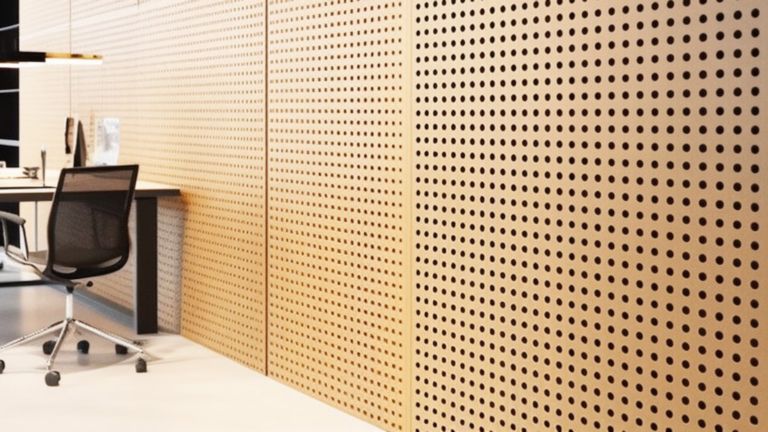
III. Advantages of Wooden Perforated Sheets in Auditoriums
Perforated sheet cladding provides numerous advantages when it comes to improving auditorium acoustics. Let’s examine some of these benefits more closely:
Improve Acoustic Performance
One of the primary advantages of perforated laminate sheets in auditoriums is their ability to improve sound absorption and diffusion. Their evenly spaced perforations enable sound waves to pass through, thereby reducing echo and reverberation within the room, leading to improved speech intelligibility, music clarity, and overall audio quality for performers and audience members alike.
Acoustic design plays an essential role in optimizing auditorium sound quality, with wooden perforated sheets playing an invaluable role in this effort. By strategically placing them in key locations such as walls or ceilings or as acoustic panels, designers can better control sound reflections to create an immersive auditory experience for their patrons.
Aesthetics and Design
Wooden perforated sheets not only bring acoustic benefits to auditorium interiors; they can also add visual interest. Their natural warmth and texture add an air of sophistication while being easily customizable into patterns or designs to meet designer specifications for auditorium designs.
No matter the style of interior decor, perforated sheet square hole offers versatile solutions for seamlessly integrating into it. Their combination of acoustic functionality and aesthetic beauty make these panels the perfect way to create visually captivating yet acoustically optimized auditorium environments.
Durability and Sustainability
Wooden perforated sheets are known for their resilience and resistance to wear-and-tear. Their construction from high-grade wood ensures long-term use in auditoriums; these panels can withstand daily impacts, vibrations and environmental elements while still remaining structurally sound.
Sustainable wood materials make an important statement of eco-friendliness when used to construct perforated sheets, and eco-forestry practices ensure responsible harvesting that reduces its impact on the environment. Auditorium can contribute towards sustainability efforts without compromising performance or aesthetics by opting for perforated sheet panel in auditoriums.
Stay tuned for next part of this case study, where we’ll investigate how perforated ceiling sheets have proven themselves useful in auditoriums – including ceilings, wall cladding and acoustic panels.
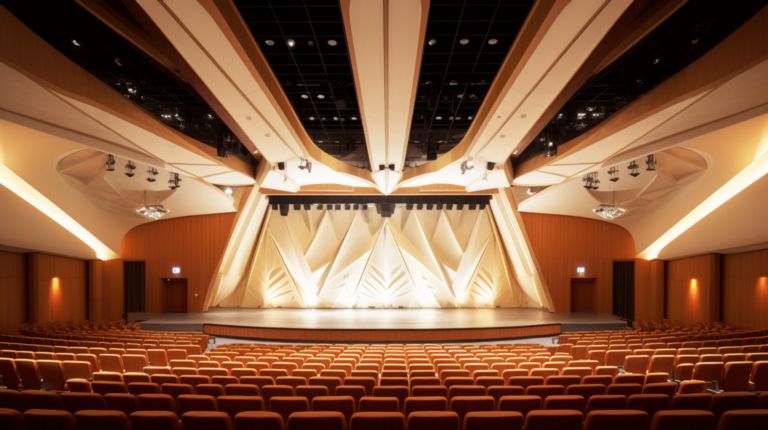
IV. Successful Applications of Wooden Perforated Sheets in Auditoriums
Wooden perforated sheets find many uses in auditoriums, providing both functional and aesthetic advantages. Let’s examine some of their successful perforated sheet uses in more depth:
Ceiling with Perforated Sheet
Wooden perforated sheets are often used for suspended ceilings in auditoriums. Installing these panels has several advantages; firstly, their perforations promote improved sound distribution across the room – this helps minimize echos and create a more even acoustic environment, so every seat in an auditorium receives maximum sound quality.
Also, using wooden perforated sheets for ceilings adds an elegant and sophisticated touch to an auditorium. Wood’s natural beauty and warmth provide an eye-catching focal point in the space and enhance its overall aesthetics. No matter if it’s traditional or contemporary design; perforated sheet ceiling provides plenty of opportunities to create striking patterns and designs to compliment it perfectly.
Perforated Sheet Wall Cladding
Wooden perforated sheets can also be used as decorative wall cladding in auditoriums. Installing these panels on walls provides several benefits for sound absorption and diffusion. Perforations help minimize sound reflections to produce more acoustically balanced environments for performances or presentations, guaranteeing optimal audio quality for performances or presentations.
Wooden perforated sheet wall cladding adds an eye-catching element to an auditorium, with intricate patterns created by perforations making plain walls into captivating focal points. Furthermore, its natural warmth and texture bring sophistication and elegance into any space; further adding aesthetic appeal and improving ambiance.
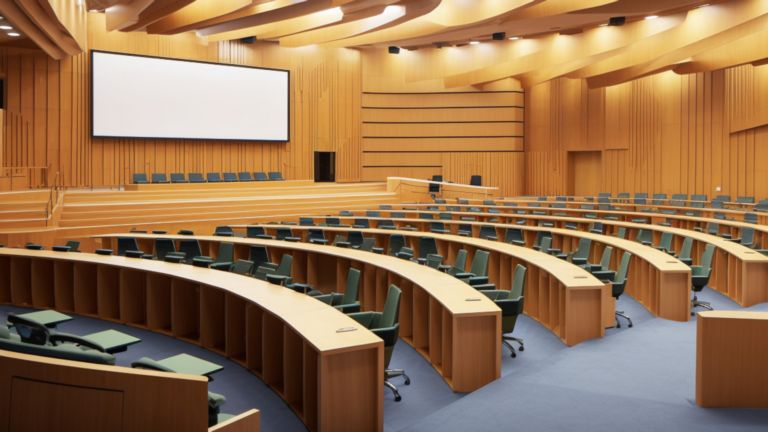
Perforated Sheet Acoustic Panels
Wooden perforated sheets can also be utilized to craft auditorium acoustic panels that provide effective sound control solutions. These panels may serve as stage backdrops or wall-mounted pieces depending on the needs of an auditorium, with their perforated design providing sound absorption and diffusion properties that help create an overall more balanced auditory experience.
Acoustic panels created from wooden perforated sheets not only improve sound quality but also contribute to the aesthetics of an auditorium. Their natural beauty adds a touch of elegance while serving their functional purpose – be it a large auditorium or small performance space – giving acoustic panels made from wooden perforated sheets the versatility and flexibility needed to meet them.
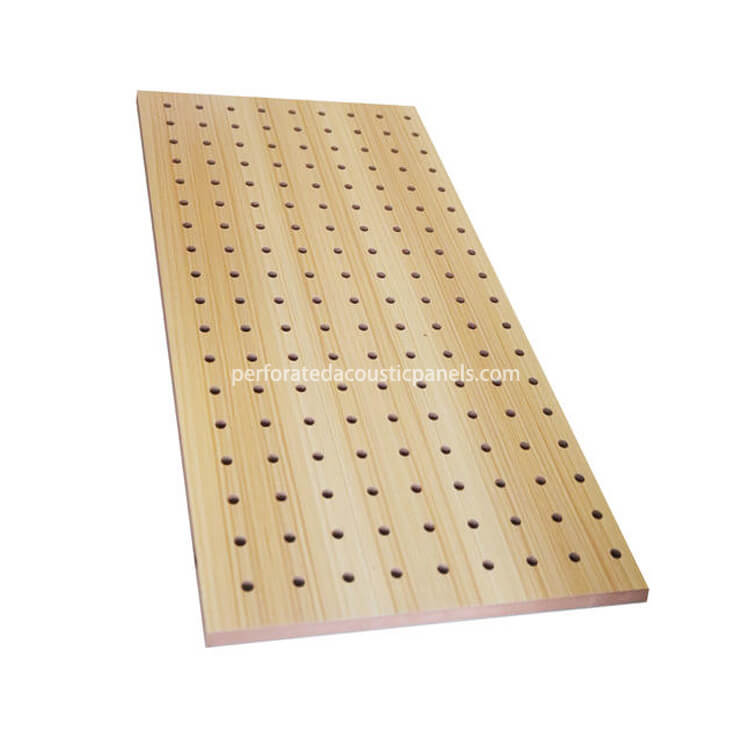
Perforated Acoustic Wood Panels
Acoustic Perforated Wall Manufacturers Acoustic Perforated Wood Panels Acoustic Perforated Wall Suppliers
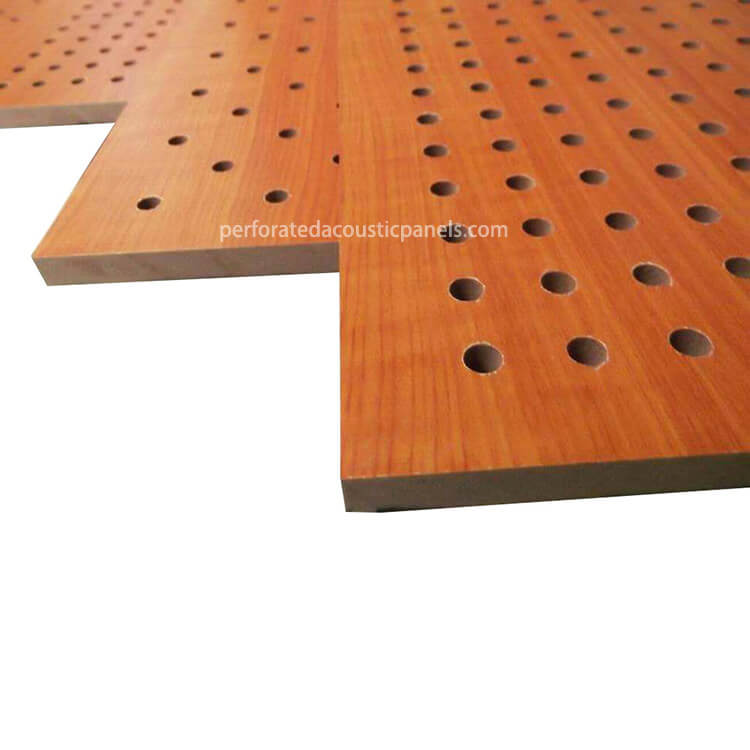
Wood Perforated Panels Factory
Perforated Wooden Panels Acoustic Perforated Sheets Perforated Board Panels
V. Conclusion
Wooden perforated sheets have proved themselves as an indispensable feature in auditoriums, offering many benefits and applications. Let us now summarise what has been learned from this case study:
Acoustic perforated sheets significantly enhance auditorium acoustic performance by improving sound absorption and diffusion, creating optimal sound quality that ensures an engaging auditory experience for performers as well as audience members alike.
Wood grain sound absorption perforated sheets add a distinctive aesthetic and design element to auditorium interiors, and their versatility enables designers to craft unique patterns and designs which complement the overall aesthetic of a space.
Perforated MDF sheets offer many advantages when it comes to durability. Being resistant to wear and tear makes them long-term performers in auditorium environments; furthermore, their eco-friendly nature aligns well with responsible practices, making these an intelligent choice.
Wooden perforated sheets have numerous applications in auditoriums, such as suspended ceilings, wall cladding, and acoustic panels. Each application provides benefits including improved sound distribution, absorption and diffusion as well as aesthetic enhancements.
As you consider the acoustics needs of your own space, we recommend exploring how wooden perforated sheets may contribute to improving sound control while adding visual appeal – whether this means auditorium seating, concert hall seats or anything else! These panels can make an excellent addition to auditorium or concert hall spaces and other settings that need sound-control with visual aesthetic appeal.
Laminated wooden perforated sheets can transform your space into an aesthetic yet sound environment, where sound quality meets aesthetics seamlessly.
We hope this case study has provided you with valuable insight into the advantages and successful applications of wooden perforated sheets and grooved wooden panels in auditoriums. If you require further assistance for your acoustical needs, feel free to reach out our team of specialists for more assistance.
Remember, wooden perforated sheets offer the ideal combination of functionality and aesthetics in your auditorium or any other space.
